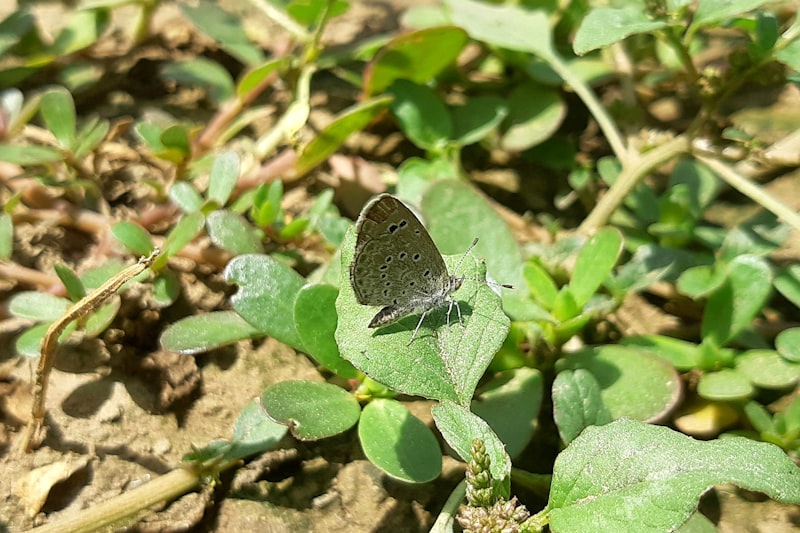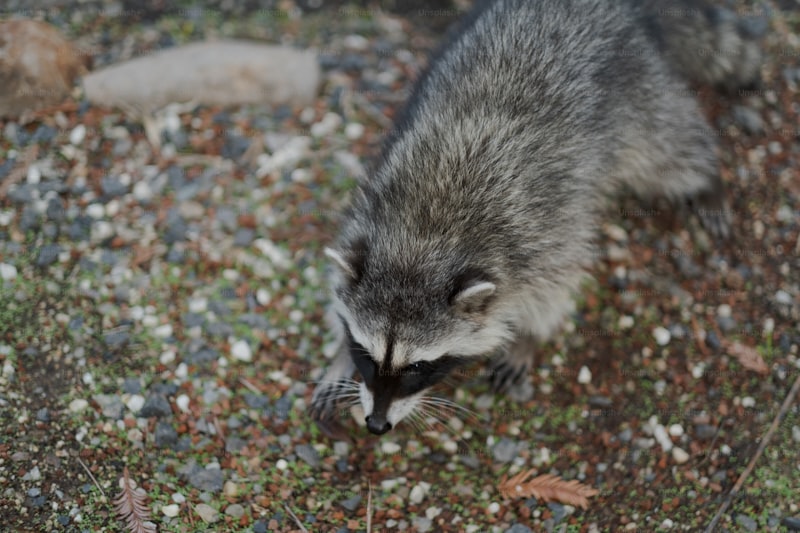Ever wondered how animals, from fearsome predators to unsuspecting prey, manage to survive and thrive with their quirky eating habits? Nature never fails to surprise us with its diverse array of feeding behaviors. Let’s dive into some of the most peculiar ones.
Predators, the kings and queens of the food chain, employ cunning strategies to secure their meals. Take the archerfish, for instance. This remarkable creature spits jets of water at insects above the water’s surface, knocking them into the water where it can swiftly devour them. It’s like a sniper in the animal kingdom!
Moving on to the herbivores, who often seem defenseless but possess fascinating adaptations. The giraffe, with its towering neck, reaches heights other herbivores can’t, allowing it to feast on leaves high in the treetops. It’s a bit like having a built-in cherry picker!
Then there are the scavengers, nature’s cleanup crew. The hyena, with its powerful jaws, can crack open bones to reach the nutritious marrow inside. It’s like having a toolkit for dining!
Some animals, like the star-nosed mole, have evolved extraordinary senses to find their next meal. With a bizarre star-shaped nose covered in sensitive touch receptors, it can detect and gobble up insects in the blink of an eye. It’s as if it has a high-tech radar system!

Even prey animals have their own unique strategies for survival. The pangolin, for instance, rolls itself into a tight ball when threatened, its tough scales acting like natural armor. It’s like having a portable fortress!
Nature’s buffet is filled with surprises, showcasing how animals have adapted to their environments in astonishing ways. From precision hunters to resourceful foragers, each species has its own tale of survival written in its feeding habits.
Nature’s Quirks: Unusual Feeding Habits Among Predators and Prey
Nature’s diversity never fails to surprise us, especially when it comes to the intricate and sometimes bizarre feeding habits of predators and prey. From the depths of the ocean to the densest forests, these behaviors showcase the adaptability and creativity of species in securing their meals.
Imagine the Archerfish, a master marksman of the aquatic world. This extraordinary fish doesn’t rely on sheer luck to catch its prey. Instead, it shoots jets of water from its mouth to knock insects off overhanging branches, precisely calculating the angle and force needed for a successful hunt. It’s a skill that combines accuracy with resourcefulness, turning water into a tool for survival.
On land, the Antlion larva demonstrates patience akin to an expert strategist. It digs conical pits in sandy soil, patiently waiting at the bottom for unsuspecting ants to stumble in. The loose grains make it difficult for prey to escape, ensuring a meal for the patient larva at the bottom of its sandy trap. It’s a prime example of nature’s engineers, using architecture to secure its next meal.
In the African savannah, the African Wild Dog displays remarkable teamwork during hunts. These social carnivores cooperate in packs, communicating through intricate vocalizations and body language. They strategize, coordinate, and pursue their prey with relentless stamina, often outlasting their quarry through sheer endurance rather than explosive speed. Their success lies in unity, demonstrating that sometimes, collaboration can be the ultimate hunting strategy.
Switching perspectives to the prey, the Golden Eagle’s aerial prowess is a marvel of evolution. With keen eyesight and swift dives, it targets mountain hares and other small mammals with lethal precision. Its hunting technique mirrors a skilled hunter’s stealth and patience, relying on surprise attacks from above to secure its next meal amidst rugged terrain.
Nature’s playbook of feeding habits isn’t just about survival; it’s a testament to innovation and adaptation. From the subtle tactics of ambush predators to the high-stakes strategies of apex predators, each species has honed unique methods to thrive in their environments. These behaviors underscore nature’s complexity and the ongoing evolutionary arms race between hunters and the hunted.
Bizarre Dining: How Animals Turn the Tables in the Food Chain
In nature, some animals have turned the act of eating into an art form, creating bizarre and often unsettling dining scenarios. Take the orchid mantis, for instance. This little predator uses its flower-like appearance to lure unsuspecting pollinators. It’s a dramatic twist on the classic “catch and eat” routine, showing us that nature’s dining table is anything but ordinary.
Or consider the deep-sea anglerfish. With its bioluminescent lure, it draws prey close enough to chomp down in the darkness of the ocean depths. It’s a bit like setting a glowing bait in a game of hide-and-seek, but the stakes are a lot higher. Instead of a friendly game, it’s a life-or-death struggle, showcasing how the food chain isn’t just about survival but also about cunning and strategy.
Let’s not forget about the vampire bat. While it might sound like something out of a horror film, these bats have a dining routine that involves slicing open the skin of larger animals to lap up their blood. It’s a grim reminder of how survival strategies can be as bizarre as they are effective.
In the animal kingdom, the rules of dining are dramatically different from our own. The prey becomes the diner, and the predators have to get creative. These strange and fascinating examples remind us that the natural world often turns our expectations on their head, creating dining experiences that are both remarkable and, at times, quite unnerving.
From Hunters to Hunted: Surprising Feeding Tactics in Wildlife
Ever wondered how animals flip the script on survival when it comes to securing their next meal? Nature unveils a mesmerizing array of feeding tactics that showcase ingenuity and adaptation. Take the cunning spider, for instance. Instead of waiting for prey to stumble into its web, the Portia spider employs strategic planning akin to a skilled tactician. It mimics the vibrations of trapped insects to lure in curious victims, turning the hunter into the hunted in a matter of seconds.
Moving from the arachnid realm to the depths of the ocean, the anglerfish employs a luminescent lure to attract unsuspecting prey. This deep-sea marvel dangles a bioluminescent organ that mimics the appearance of prey, tricking smaller fish into a deadly embrace. It’s a testament to nature’s creativity—a predator that transforms itself into a beacon of false hope, only to secure its next meal.
On the plains of Africa, the deceptively docile-looking orchid mantis adopts a floral disguise to lure pollinators like bees and butterflies. Its delicate, petal-like limbs and soft colors deceive insects into believing they’ve found a safe haven, only to fall victim to its lightning-fast reflexes. This floral predator illustrates how appearances can indeed be deceiving in the natural world.
Meanwhile, the trap-jaw ant takes a more explosive approach to hunting. With mandibles that snap shut at speeds faster than the blink of an eye, this tiny insect launches prey into the air, turning a routine forage into a high-speed chase and capture.
In the evolutionary arms race of survival, these surprising feeding tactics highlight the marvels of adaptation and the relentless pursuit of sustenance in the wild. Each strategy—from mimicry and camouflage to lightning-fast reflexes—underscores the intricate dance between predator and prey. It’s a reminder that in nature’s grand theater, even the most unlikely creatures can rewrite the rules of the hunt with astonishing prowess.
Dining Dilemmas: Predators That Became Prey, and Vice Versa
Consider the African savanna, where lions reign supreme. These apex predators prowl the grasslands with confidence, preying on herbivores like zebras and gazelles. Their skill in hunting and teamwork is legendary, yet they too face challenges. In a surprising turn of events, a pride of lions can find themselves challenged by a formidable foe or a coalition of rival lions. This shift in dynamics showcases nature’s unpredictability, where even the most dominant predators must remain vigilant.
Conversely, there are instances where prey species exhibit astonishing resilience and turn the tables on their predators. Take the cunning tactics of a herd of buffalo facing off against a pride of lions. Through sheer numbers and coordinated defense, these herbivores can thwart a lion’s attempt to make them a meal. It’s a remarkable display of collective strength and survival instinct, where what was once considered prey becomes a formidable adversary.
These dining dilemmas highlight the intricate balance of nature, where survival is not merely about strength but also about adaptability and strategy. Each encounter shapes the evolutionary arms race, influencing the behavior and strategies of both predators and prey. It’s a dynamic narrative where the line between hunter and hunted blurs, reminding us of nature’s ongoing drama and the awe-inspiring adaptations that unfold in the wild.

As we delve into these stories of dining dilemmas, we witness nature’s ability to surprise and inspire, where every interaction leaves a mark on the intricate web of life. It’s a testament to the resilience and complexity of ecosystems, where even the fiercest predators and the most vulnerable prey play their roles in the eternal dance of survival.
Beyond Instinct: The Strange Eating Habits of Predators and Their Prey
When we think of predators in the wild, visions of stealthy hunters stalking their prey often come to mind. Yet, the world of predator-prey interactions goes far beyond mere instinctual behavior. It’s a fascinating realm where survival strategies take on bizarre and sometimes unexpected forms.
Take the peculiar dining habits of some predators, for instance. The archerfish, found in freshwater habitats across Southeast Asia and Australia, has perfected the art of shooting down insects with jets of water expelled from its mouth. This remarkable technique not only showcases precision akin to a sniper but also underscores the diversity of methods predators employ to secure their next meal.
Meanwhile, in the depths of the ocean, the anglerfish uses a bioluminescent lure dangling from its head to attract unsuspecting prey. This ingenious adaptation demonstrates how predators evolve specialized tactics to capitalize on the vulnerabilities of their targets, turning what seems like a disadvantage into a lethal advantage.
It’s not just predators who display ingenuity in their feeding habits. Prey animals, too, have developed remarkable defenses to evade becoming someone else’s dinner. The bombardier beetle, for example, defends itself by ejecting a scalding chemical spray when threatened—a potent reminder that in the game of survival, adaptability and innovation often determine who lives to see another day.
From the cunning strategies of the mimic octopus, which impersonates toxic species to deter predators, to the deceptive camouflage of stick insects blending seamlessly into their surroundings, the evolutionary arms race between predators and prey continues to unfold in astonishing ways.
Frequently Asked Questions
What are some surprising ways prey animals defend themselves during feeding?
Discover unexpected strategies prey animals use to defend themselves while feeding. Learn about surprising adaptations and behaviors that help them evade predators and ensure survival.
What are some unusual feeding strategies used by predators in the animal kingdom?
Explore unique feeding strategies employed by predators in the animal kingdom, from trap-building spiders to anglerfish luring prey with bioluminescent lures. Discover how these adaptations enhance hunting efficiency and survival.
How do scavengers contribute to ecosystems through their feeding habits?
Discover how scavengers play a crucial role in ecosystems by efficiently recycling nutrients and cleaning up decaying organic matter, thereby maintaining ecological balance and promoting overall environmental health.
What are some examples of carnivores exhibiting unexpected feeding behaviors?
Discover surprising feeding behaviors among carnivores, such as polar bears consuming vegetation, or lions scavenging instead of hunting. Explore how these behaviors challenge traditional views of carnivorous diets.
How do herbivores adapt to unusual feeding habits in challenging environments?
Learn how herbivores adjust their feeding habits to survive in challenging environments. Understand the strategies they employ to obtain necessary nutrients and thrive in diverse habitats.


